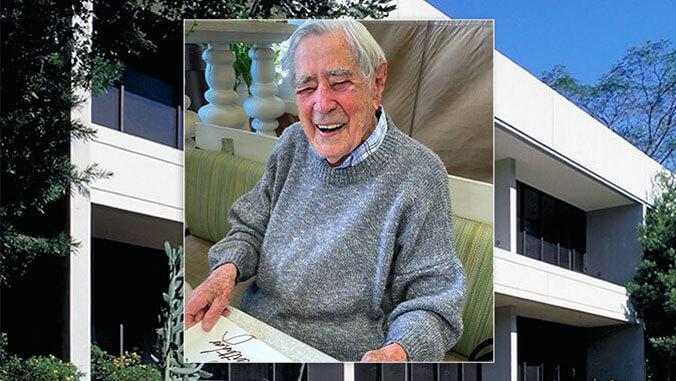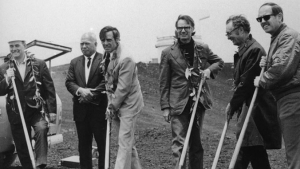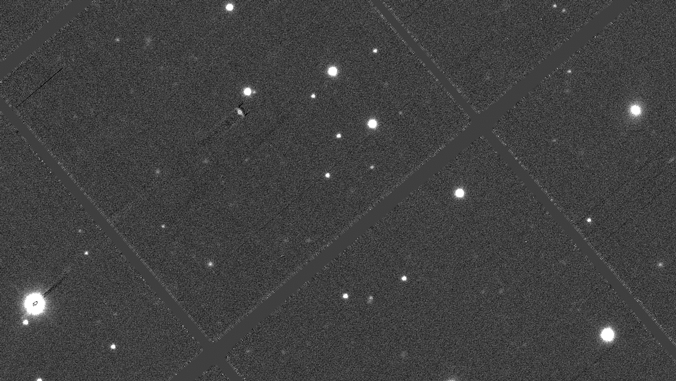
A near-Earth asteroid now officially bears the name of a University of Hawaiʻi astronomer who founded one of the world’s leading astronomy research programs and helped establish Maunakea astronomy. Asteroid (357243) Jefferies, with an orbit about 2.5 times larger than Earth’s, was first spotted by UH Institute for Astronomy (IfA)’s Pan-STARRS 1 telescope atop Haleakalā on Maui in October 2011, and carries the name of John T. Jefferies, the department’s inaugural director.
- Related UH News story: Ground-breaking UH-designed sensors aboard NASA’s historic space telescope, December 20, 2021

IfA astronomers who discovered the object, which is about a mile in diameter and poses no threat to Earth, proposed Jefferies’ name once the International Astronomical Union, which is responsible for assigning names to celestial bodies, determined the object was indeed an asteroid. The solar system is home to tens of millions of asteroids, which are rocky bodies ranging in size from a few feet, to dwarf planets the size of our Moon. Most of these bodies are distant, however a number orbit close to the Earth, and are known as near-Earth objects.
“Officially naming an asteroid after John Jefferies, who essentially founded the IfA, is a timeless way of paying tribute to an astronomer that made a truly lasting and deep contribution to astronomy by enabling an enormous amount of education and research in Hawaiʻi,“ said Doug Simons, executive director at IfA.
At least 45 asteroids are named in honor of current and former IfA astronomers, students, staff and more.
- Related UH News story: Asteroids named after UH astronomers, June 23, 2021
Astronomical visionary

Jefferies moved to Hawaiʻi in 1964 to build a small program in solar physics at UH Mānoa and went on to create the IfA, which today is an internationally recognized research institute and one of the largest university astronomy programs in the world, with observatories on Maunakea and Maunaloa on Hawaiʻi Island and Haleakalā.
- Related UH News story: Asteroid discovered by UH telescope will make close pass Monday, July 24, 2020
During his 16-year tenure (1967 to 1983) as director, a new generation of telescopes was established on Maunakea including the UH 2.2-meter telescope, Canada-France-Hawaii Telescope, NASA Infrared Telescope Facility, United Kingdom Infrared Telescope, two 24-inch UH telescopes, the Caltech Submillimeter Observatory and the James Clerk Maxwell Telescope. Those observatories laid the foundation for the greatest observatory site in the Northern Hemisphere.
Indigenous ways of knowing
IfA also works alongside ʻImiloa Astronomy Center at UH Hilo, which oversees weaving traditional Indigenous naming practices with important astronomical discoveries made by telescopes in Hawaiʻi. A Hua He Inoa is a program where Hawaiian speaking students and educators work with Hawaiʻi-based astronomers to create names in ʻōlelo Hawaiʻi (Hawaiian language) for objects discovered by Hawaiʻi-based observatories. The program is a collaborative effort between ʻImiloa, IfA, community members, and UH Hilo’s Ka Haka ʻUla O Keʻelikōlani College of Hawaiian Language.
For more on Asteroid (357243) Jefferies go to NASA’s website.


